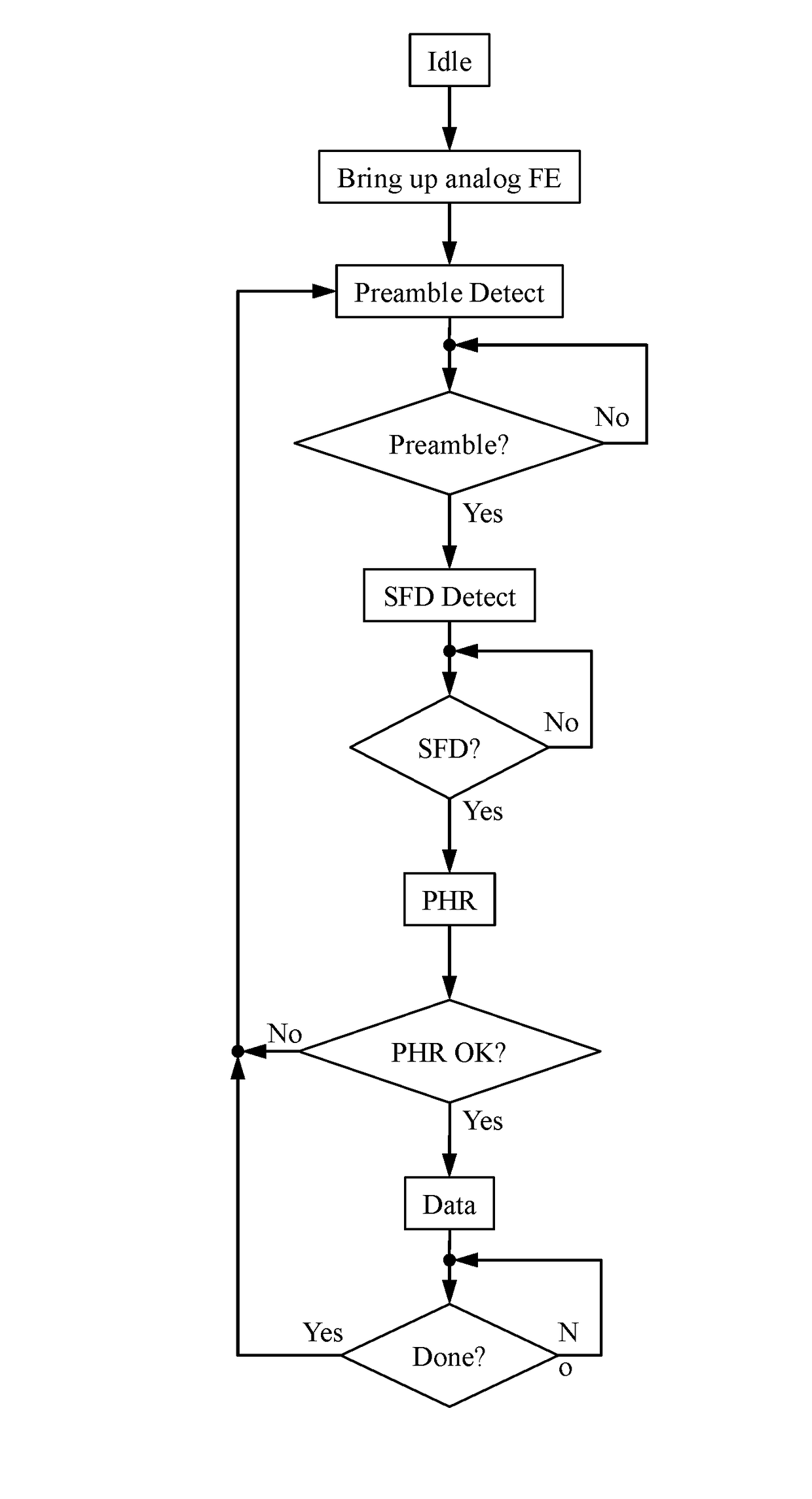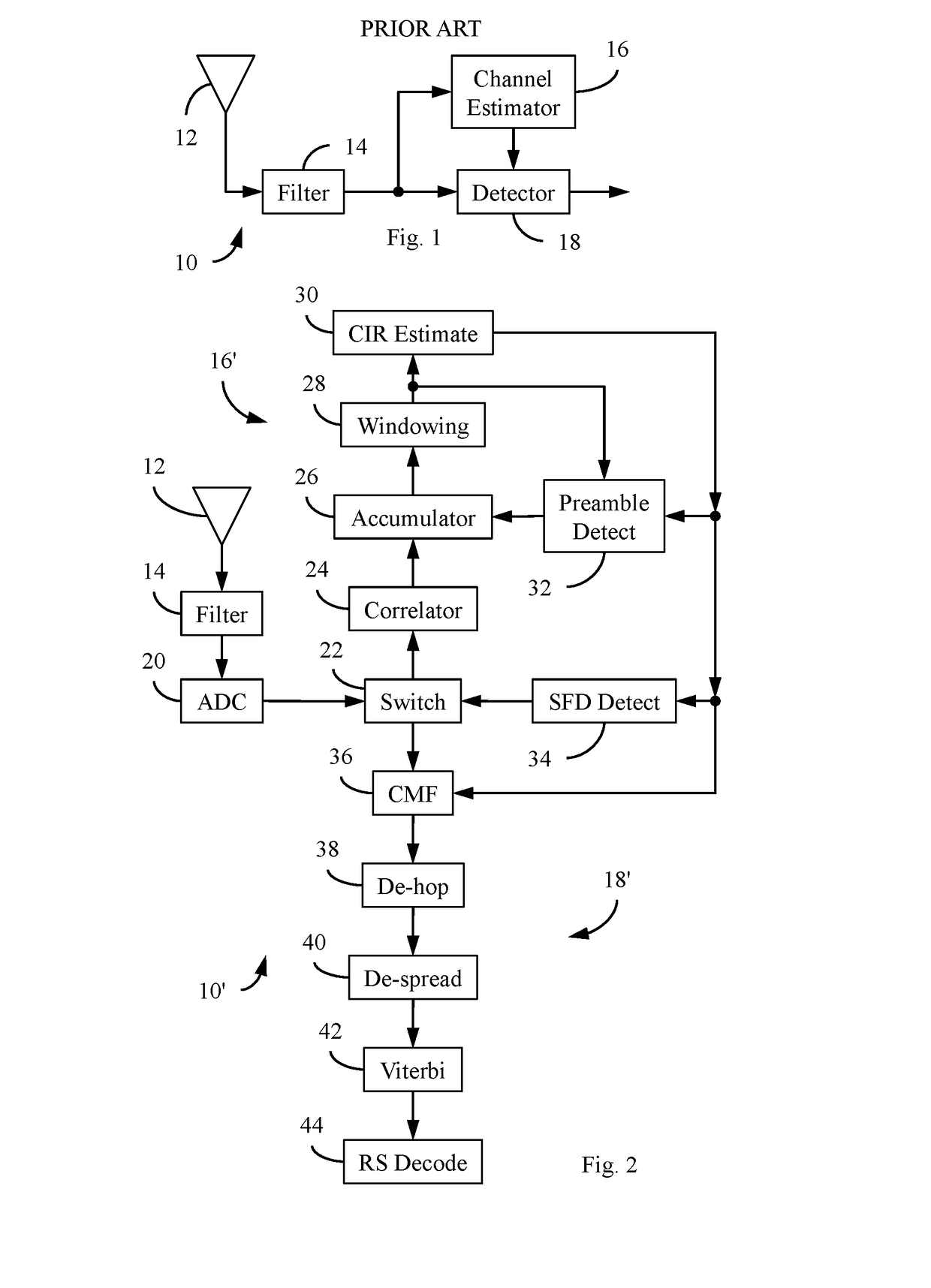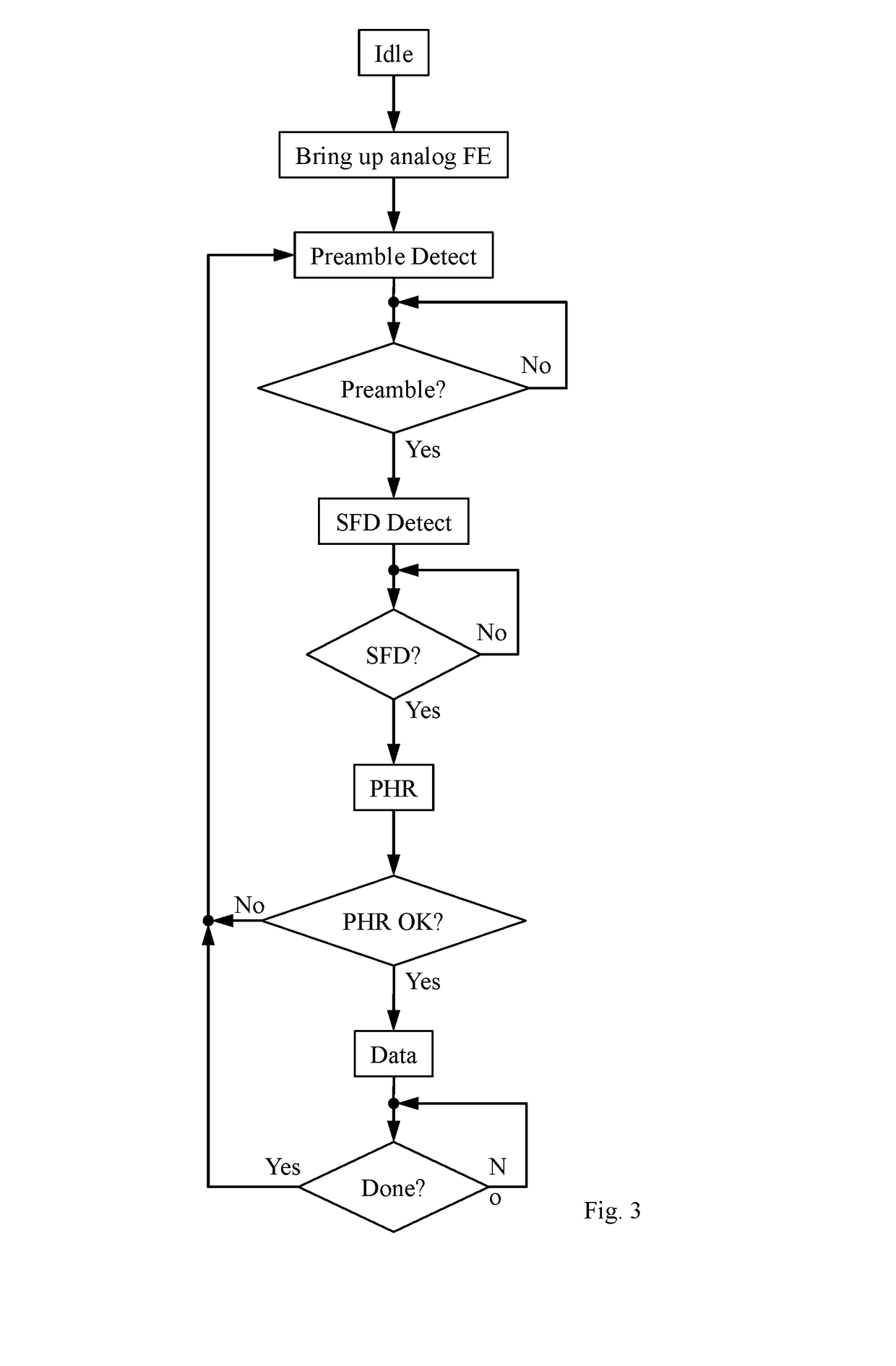A Receiver for Use in an Ultra-wideband Communication System
a communication system and receiver technology, applied in the field of ultra-wideband communication systems, can solve the problems of increasing the cost of power consumption of rake filter implementations, so as to avoid unnecessary proliferation of numbers
- Summary
- Abstract
- Description
- Claims
- Application Information
AI Technical Summary
Benefits of technology
Problems solved by technology
Method used
Image
Examples
Embodiment Construction
[0033]Shown in FIG. 2 is a UWB receiver 10′ constructed in accordance with our invention. As in the prior art system shown in FIG. 1, the signal received by antenna 12 is continuously conditioned by filter 14. The conditioned signal is then periodically sampled by an analog-to-digital converter (“ADC”) 20 and provided as a continuous series of digital samples. In accordance with a preferred embodiment of our invention, ADC 20 is specially adapted to provide each digital sample in ternary form, i.e., [−1, 0, +1]. In view of the difficulty of currently available standard digital circuit technology efficiently to represent a 3-value variable in the form of a single ternary trit, we anticipate, at least in the near term, such variables will require representation using 2 conventional, binary bits, wherein a first one of the bits represents the numeric component of the variable, i.e., [0, 1], and the second bit represents the sign of the variable, i.e., [+, −]. In this regard, it could b...
PUM
 Login to View More
Login to View More Abstract
Description
Claims
Application Information
 Login to View More
Login to View More - R&D
- Intellectual Property
- Life Sciences
- Materials
- Tech Scout
- Unparalleled Data Quality
- Higher Quality Content
- 60% Fewer Hallucinations
Browse by: Latest US Patents, China's latest patents, Technical Efficacy Thesaurus, Application Domain, Technology Topic, Popular Technical Reports.
© 2025 PatSnap. All rights reserved.Legal|Privacy policy|Modern Slavery Act Transparency Statement|Sitemap|About US| Contact US: help@patsnap.com



